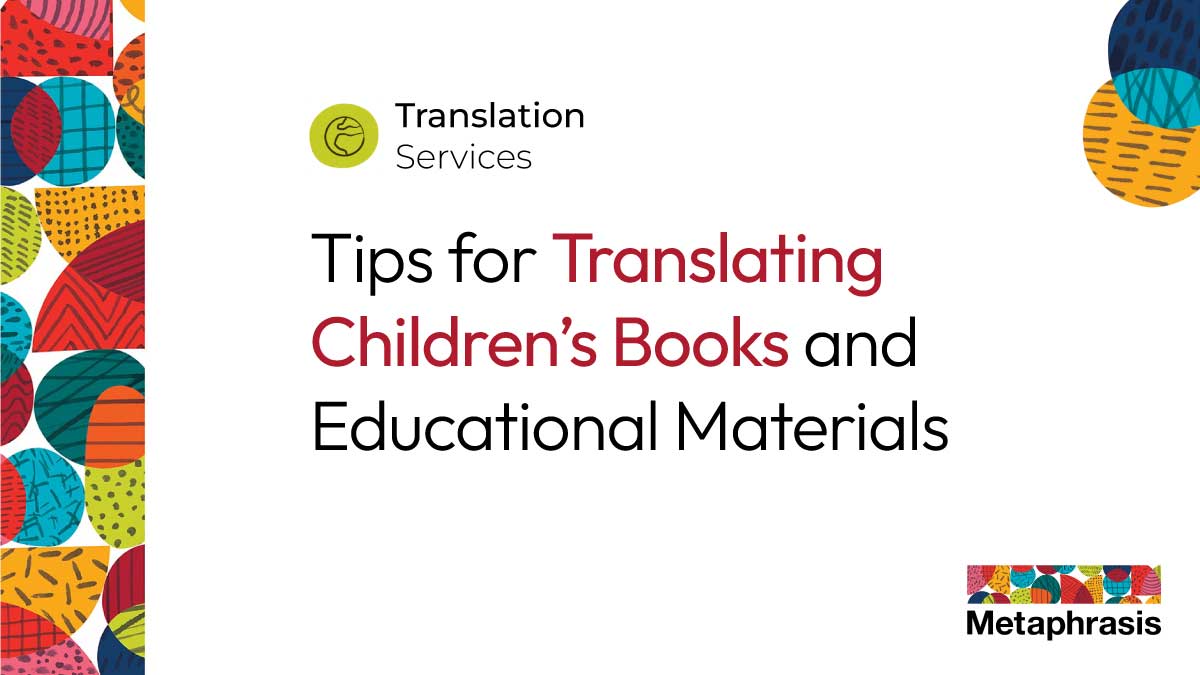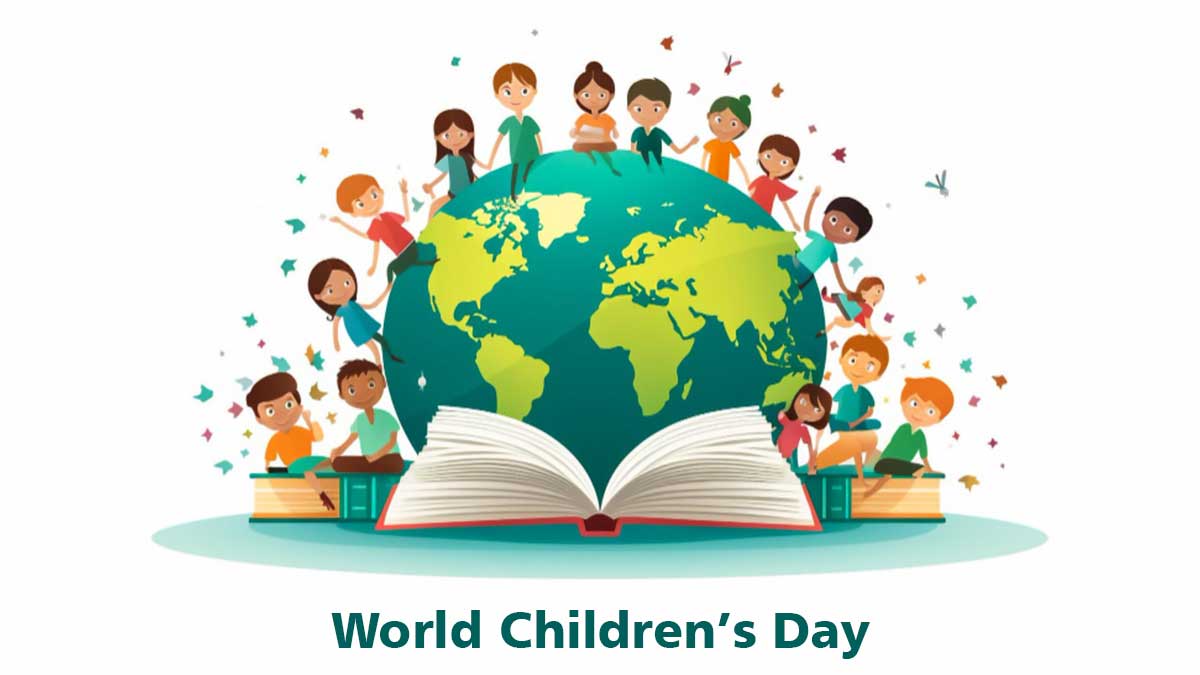
Tips for Translating Children’s Books and Educational Materials
Every November, World Children’s Day reminds us of our shared responsibility to create a world where every child can learn, dream, and thrive. For global educators, authors, and publishers, one of the most meaningful ways to honor this day is by making stories and learning materials accessible in every language. At Metaphrasis, we believe that words are bridges and in the world of children’s education, those bridges can change lives.
Translating children’s books and educational resources is both an art and a science. It requires more than linguistic skill; it calls for empathy, creativity, and a deep understanding of how children think and feel. Below are key tips and considerations for ensuring that your translations nurture curiosity, respect culture, and keep learning joyful.
Understand the Heart of the Story, Not Just the Words
Children’s literature often carries lessons woven into the narrative messages about friendship, honesty, courage, or kindness. When translating such texts, it’s essential to capture the emotion and intent, not just the literal meaning.
A direct word-for-word translation might lose the rhythm, humor, or emotional impact that makes a story special to young readers. Instead, translators should focus on preserving the spirit of the story. What lesson does it teach? What feelings does it evoke? The goal is for children reading in any language to experience the same sense of wonder and connection as the original audience.
At Metaphrasis, we approach children’s content with the same care authors use to create it ensuring that translated stories still spark imagination and joy.
Consider Age-Appropriate Language and Readability
Children’s materials must align with a child’s cognitive and linguistic development. Translators should always consider age-appropriate vocabulary and sentence structure. For instance, words that seem simple to adults may not exist in the same form in another language, or they may carry different meanings.
For early readers, rhythm and repetition play a big role in learning. In such cases, maintaining rhyme schemes or sound patterns might take priority over literal translation. For older children, clarity and comprehension are key, especially for textbooks or learning modules.
Professional translators adapt tone, style, and structure to the child’s learning level keeping the message engaging, accurate, and easy to understand.
Embrace Cultural Adaptation, Not Just Translation
Stories and educational examples are deeply rooted in culture. A reference that makes perfect sense in one country might feel unfamiliar or even confusing in another. That’s where cultural adaptation (or localization) becomes vital.
A good translation replaces unfamiliar cultural references with relatable ones while keeping the story’s meaning intact. For example, if a story mentions a traditional game or food, the translator might include a local equivalent that resonates with young readers. This helps ensure inclusivity while respecting the cultural essence of the original work.
At Metaphrasis, our translators approach each project with cultural sensitivity, ensuring children around the world can see themselves in the stories they read.
Translating Children’s Books and Maintain Educational Accuracy in Learning Materials
Translating textbooks, worksheets, and educational programs demands precision. Beyond language, translators must also understand subject-specific terminology and educational standards in the target region.
A math problem, scientific concept, or historical event might require adaptation for clarity or regional relevance. Translators also need to maintain accuracy in measurements, names, and examples, especially when working across different education systems.
Collaborating with subject-matter experts helps ensure that every translated learning resource supports accurate and effective education.
Preserve Visual and Emotional Harmony
Illustrations and layout play a significant role in children’s engagement with books. Translators must be mindful of how text interacts with visuals. For instance, expanding or shortening sentences can affect how text fits around illustrations or page designs.
Additionally, certain gestures or symbols in illustrations may carry different meanings in other cultures. In such cases, coordination between translators, designers, and editors helps ensure that both visual and linguistic messages align harmoniously.
Translation, in this sense, becomes a team effort one that values both the story and the experience it creates for children.
Balance Creativity and Consistency
Children’s materials often include playful language rhyme, wordplay, or invented terms. While it may be impossible to replicate these exactly, creative adaptation allows translators to craft similar experiences in the target language.
Consistency is equally important, especially in educational content. Terminology, spelling, and tone must remain uniform throughout to avoid confusion. Translation memory tools and style guides help maintain this consistency while allowing room for creativity.
Work With Translators Who Understand Children
The best translations for children are those created by professionals who not only know the language but also understand how children learn and communicate. Translators with experience in children’s literature or education bring a unique perspective they know when to simplify, when to explain, and when to let imagination lead.
At Metaphrasis, we believe in combining linguistic expertise with empathy. Our translators work closely with educators and publishers to ensure every word resonates with its intended audience young learners who are discovering the world, one sentence at a time.
The Role of Translation in Empowering Global Learning

On World Children’s Day 2025, it’s important to remember that language access is a form of empowerment. When children can learn in their own language or in a language they understand—they gain confidence, inclusion, and opportunity.
By investing in professional translation services, schools, non-profits, and publishers can make quality education and inspiring stories available to every child, regardless of where they live.
At Metaphrasis, we take pride in helping organizations and authors share knowledge that transcends language barriers. Our work in translating children’s and educational materials reflects our commitment to inclusivity, literacy, and understanding across generations and cultures.
Final Thoughts
Translating for children isn’t simply about changing words it’s about nurturing curiosity and respect for diversity. A well-translated story can inspire empathy; a well-adapted lesson can shape a brighter future.
As the world celebrates World Children’s Day, let’s continue to make learning accessible, stories inclusive, and communication kind. Because every child deserves to understand and be understood.
